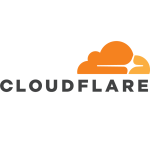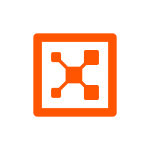What is our primary use case?
We use CloudGuard to monitor the cloud IaaS, AWS, and Azure security postures, including cloud assets' configurations. Based on the framework in the rulesets, it will give us failing, passing, or partially compliant scores. It allows us to implement auto-remediation and guardrails.
If a user exposes storage on the public internet accidentally or purposefully, a daily report is sent to the account owner. CloudGuard will automatically fix the issue if auto-remediation is appropriate. We have GCP, AWS, and Azure accounts. CloudGuard is a SaaS solution, and we onboard all our AWS accounts, whether public, private, or hybrid.
How has it helped my organization?
In our sandbox environment, auto-remediation kicks in, and everything is fixed. Users try to do it themselves but often don't know how because they're not trained to provide cloud support. We don't currently use complete remediation, which will break their production environment, but we're getting better by nagging the cloud account users. Our cybersecurity team can use the shared response score to encourage cloud account owners to fix the problem.
CloudGuard has specific instructions for how users should fix issues, but it's like pulling teeth sometimes. Users often don't respond, and we get to the point where we need to tell them that it's going through change management and we can't renew it. We will auto-remediate in production environments if they don't respond by that date.
It helped some cloud deployment users understand how to improve security posture, but not all of them. It depends on whether they are reading the CloudGuard reports daily. Many don't want to manage that part, and we believe our cybersecurity will help fix that for them.
We automated account onboarding. When a user wants a new cloud account, the automation scripts kick in after the request is approved to create the cloud account. After the provisioning is completed, the account is onboarded into CloudGuard. It enables us to have full coverage because CloudGuard monitors all our organization's cloud accounts.
I wouldn't say that CloudGuard has freed up staff for other projects. I have two or three dedicated SecOps people to monitor and follow up with remediation when auto-remediation isn't possible. We also deal with CloudGuard account requests and just-in-time user account access. It's difficult to assign a specific user to view the cloud accounts only they can see.
I'm an SME for the product and train people annually because SecOps folks come and go. So far, we have had this software for three years. A lot of other organizations will switch solutions after two or three years. Training is essential because it's a high learning curve for people unfamiliar with the cloud. I don't think CloudGuard has made it more accessible. While it has decreased the resources, we still need at least one full-time admin dealing with CloudGuard, especially with the bugs.
We saved some time. We always go for a Unified Enterprise Platform. In terms of Cloud Security Posture Management, we wanted an enterprise solution with GCP, AWS, and Azure support, so we chose CloudGuard.
What is most valuable?
The posture management and remediation features are the most valuable. We use GSL Builder to build custom rules in alignment with our organization's policies. CloudGuard has canned rules using multiple standard frameworks, but we also have additional rules. Building custom rules with GSL Builder is medium difficulty. They have several examples of other compliance rules you can use. The GSL documentation is decent. A non-technical person can learn to use GSL Builder in about a week. GSL Builder saved us time and reduced human error.
The auto-remediation works when it works. It does its job and is based on the rule instead of the alert's severity. In our company, we say, "Okay, this rule is a high severity. We don't want the data to be exposed on the internet." For example, if someone puts a public IP on our database, we will set a rule to shut it down immediately. That's how we define remediation.
It isn't based on the severity or the level of work. Some rules may be defined as lower severity by default, but they might be higher depending on the organization's policy. It kicks in when there's an alert matching the remediation rule. The effectiveness of the remediation is 50%. Some of their bots used to fix issues automatically need to be updated. We had to make a few custom changes to some bots because they don't wake up.
What needs improvement?
CloudGuard's effective risk management only scans accounts every hour. We have more than 150 AWS accounts and 20 Azure accounts. We sent Check Point a request asking them to increase the frequency to five to fifteen minutes. I want the flexibility to scan it as often as possible based on the account's importance. That part is lacking.
When rules change, it messes up the remediation. They haven't found a fix for that yet. The remediation rule goes into limbo. It's an architectural design flaw within their end compliance engine—a serious bug. We must spend extra time reapplying the rule when they periodically update the compliance presets. Auto-remediation breaks if you're using that particular out-of-the-box rule. I haven't experienced this recently, so maybe they fixed that part. However, that's what it did in the past.
Check Point is slow to respond to bugs. They resolve bugs maybe once every two weeks, and their R&D is slow. They're in Israel, and it's not just the Israeli holidays. I would probably pick a large US company if we did this over again.
They don't give us continuous feedback. I want live feedback when they change something. Stop breaking things. The company should let us know what they're doing when they add new features. They don't have an official beta program, so you can't test the new features.
That's the other bad thing about this product, but I don't know about other Check Point products. They're a firewall company but not a software company. If you put out a beta, customers should have the option to test it and give feedback. I've been putting a lot of work into CloudGuard to fix all the bugs. They should have paid me to fix their bugs for them.
They need to decrease their bug resolution time. Anything longer than two weeks is problematic. It's why we don't jump into the deep end with all these other features they've added. Our primary feature is the CSPM cloud part. The solution is useless if the reporting or remediation breaks, as it has in the past. It requires an SME for CloudGuard to dig in deeper, which takes time away from our SecOps folks.
For how long have I used the solution?
We've been using CloudGuard for three years.
What do I think about the stability of the solution?
CloudGuard is pretty stable.
What do I think about the scalability of the solution?
CloudGuard is scalable. I don't need to worry about it.
How are customer service and support?
I rate Check Point's support a seven out of ten. They respond within a day.
How would you rate customer service and support?
Which solution did I use previously and why did I switch?
How was the initial setup?
Setting up CloudGuard is straightforward, and it takes a few days. We handled the deployment in-house with two full-time employees. It's a SaaS solution, so the only maintenance required is backups.
What about the implementation team?
We implemented this solution in-house.
What's my experience with pricing, setup cost, and licensing?
The pricing of CloudGuard increases annually, and we don't see the value because we don't use all the features. We're primarily using CSPM and maybe Workload Protection. We did the Kubernetes part and used Network Explorer as a one-off. We only used Network Explorer for diagnostics.
We use the Intelligence module for CSPM but don't analyze network traffic with CloudGuard. It's an expensive subscription, so we don't use the intelligence part.
Which other solutions did I evaluate?
We evaluated Palo Alto Prisma Cloud and Twistlock. Back then, the solution was owned by an independent company called Dome9, and Check Point acquired them. It had the best rule set out there. We chose it because it had all the rule sets out of the box and supported GCP, Azure, and AWS.
What other advice do I have?
I rate Check Point CloudGard Posture Management a seven out of ten. CloudGuard does its job, but the remediation is not perfect. Other CSPM tools do a better job of using remediation exclusion rules, especially scanning and putting out reports at a custom frequency versus every hour.
If the price isn't an issue and you don't care about using all the features, it's an okay product for enterprises to use to cover all cloud IaaS. If you're thinking about implementing CloudGuard, you should consider two things. First, the price is marked up every year by 10-plus percent, whether you use a particular feature or not. It's an annual subscription model, so you can always cancel at any time.
Second, you should think about the modules. Workload Protection is okay if you use Kubernetes. You can use intelligence if you need to analyze traffic within your cloud environment for regulation-specific reasons, but it will cost you extra. CloudGuard's strong suit is that they support a lot of the features and AWS cloud assets.
Which deployment model are you using for this solution?
Public Cloud
If public cloud, private cloud, or hybrid cloud, which cloud provider do you use?
Other
Disclosure: PeerSpot contacted the reviewer to collect the review and to validate authenticity. The reviewer was referred by the vendor, but the review is not subject to editing or approval by the vendor.





















